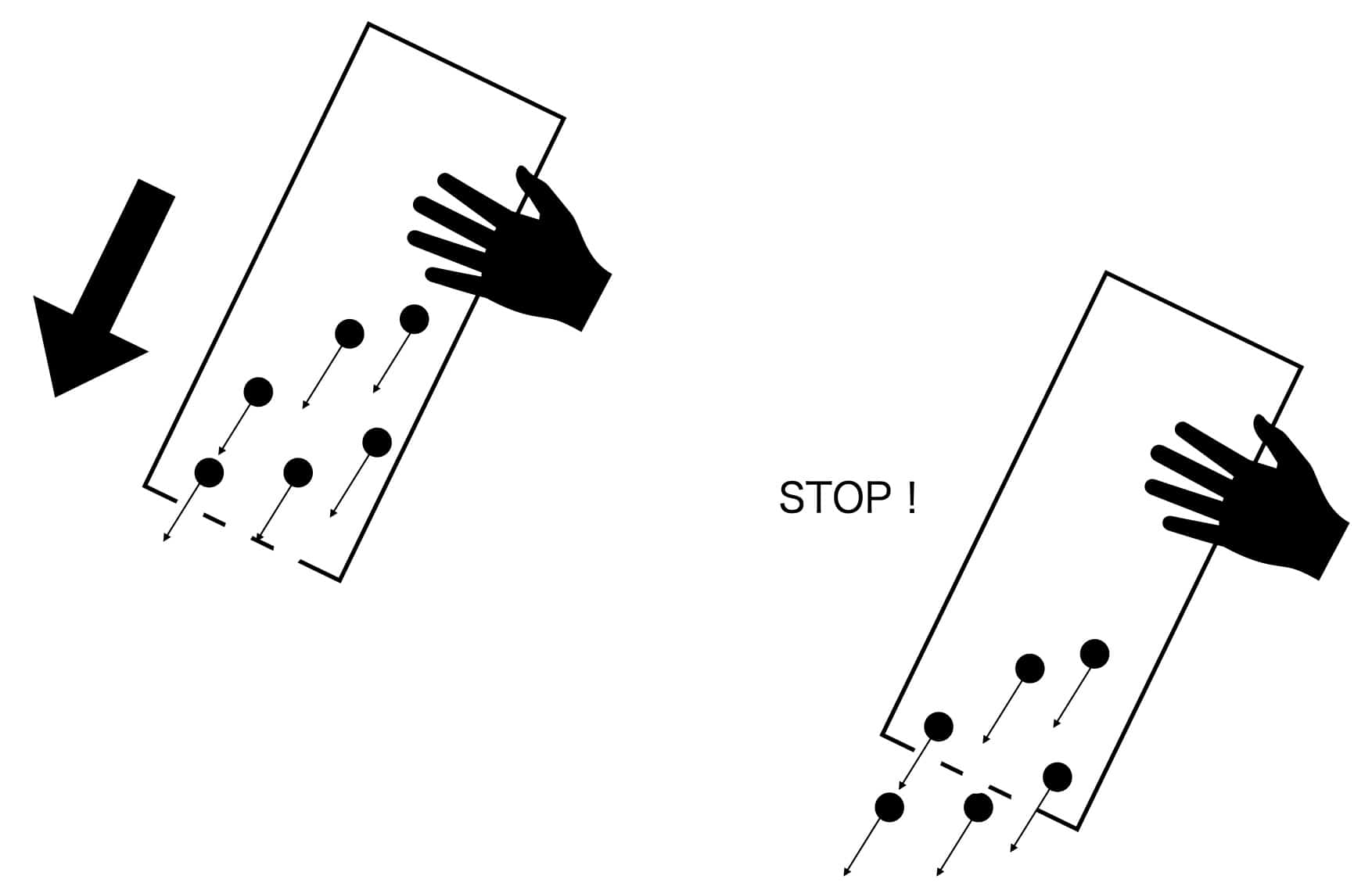Science at the Dinner Table! Pop! Is Sprinkling Salt Really the Same as the “Daruma Otoshi” Trick? (Law of Inertia)
The Law of Inertia Hiding in Your Kitchen
The law of inertia, which is so seamlessly integrated into our daily lives, can be found right in the kitchen. It’s that simple act of sprinkling salt!

When you’re cooking, you rhythmically shake salt or pepper onto your food, right? That seemingly simple motion is actually a perfect demonstration of the law of inertia in action. Let’s take a closer look. First, you give the salt shaker a quick shake downwards. At this moment, the salt inside moves down with the shaker.
Then, you suddenly stop the shaker.
What happens then? Even though the shaker has stopped, the salt inside keeps trying to move downward, as if saying, “We still want to go down!” This is another aspect of the law of inertia: an object in motion tends to stay in motion. As a result, the salt continues its downward journey and escapes through the holes in the shaker.

In other words, the act of shaking salt relies on a “mismatch” that occurs between the moving salt and the stationary shaker. This is the same principle a carpenter uses when they tap the end of a plane’s handle to adjust the blade. When the handle is tapped and then suddenly stopped, the blade continues to move forward due to inertia, sliding smoothly into the handle.
Our everyday lives are filled with scientific laws we don’t even notice. The next time you shake salt, you might think, “I’m a master of inertia!” and your regular cooking could become a lot more fun.
Other Experiments to Feel the Law of Inertia
Also, the magic trick of quickly pulling a tablecloth out from under a set table without spilling anything—that’s pretty cool when you pull it off, right? It’s not magic at all; it’s the power of a scientific principle called the law of inertia. This is the somewhat mysterious property that states: an object at rest will remain at rest unless an external force is applied.
The classic Japanese game “Daruma Otoshi” (a kind of stacking doll game) is another perfect example of this law in action. When you quickly knock out the bottom piece, the pieces stacked on top of it try to stay right where they are, as if saying, “Hey, we’d like to stay put!” That’s why they fall straight down.
Wondering if there was a more dynamic way to observe this “tendency to stay put,” I tried a bunch of different experiments. For example, what do you think would happen if you popped a water balloon in mid-air? Even after the balloon is gone, the water briefly holds its spherical shape and stays in place! You can check out the slightly thrilling experiment here ▼
You might also enjoy trying the “Fingertip Daruma Otoshi” challenge with a coin and a bottle. It’s surprisingly tricky, but the moment the coin drops into the bottle as if it’s being sucked in is incredibly satisfying! ▼


